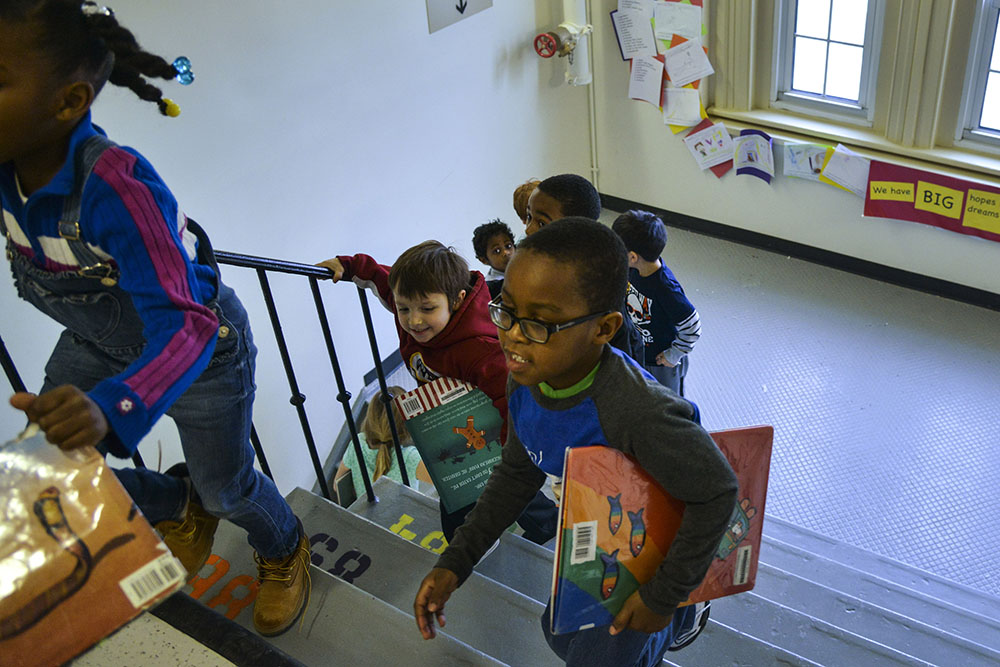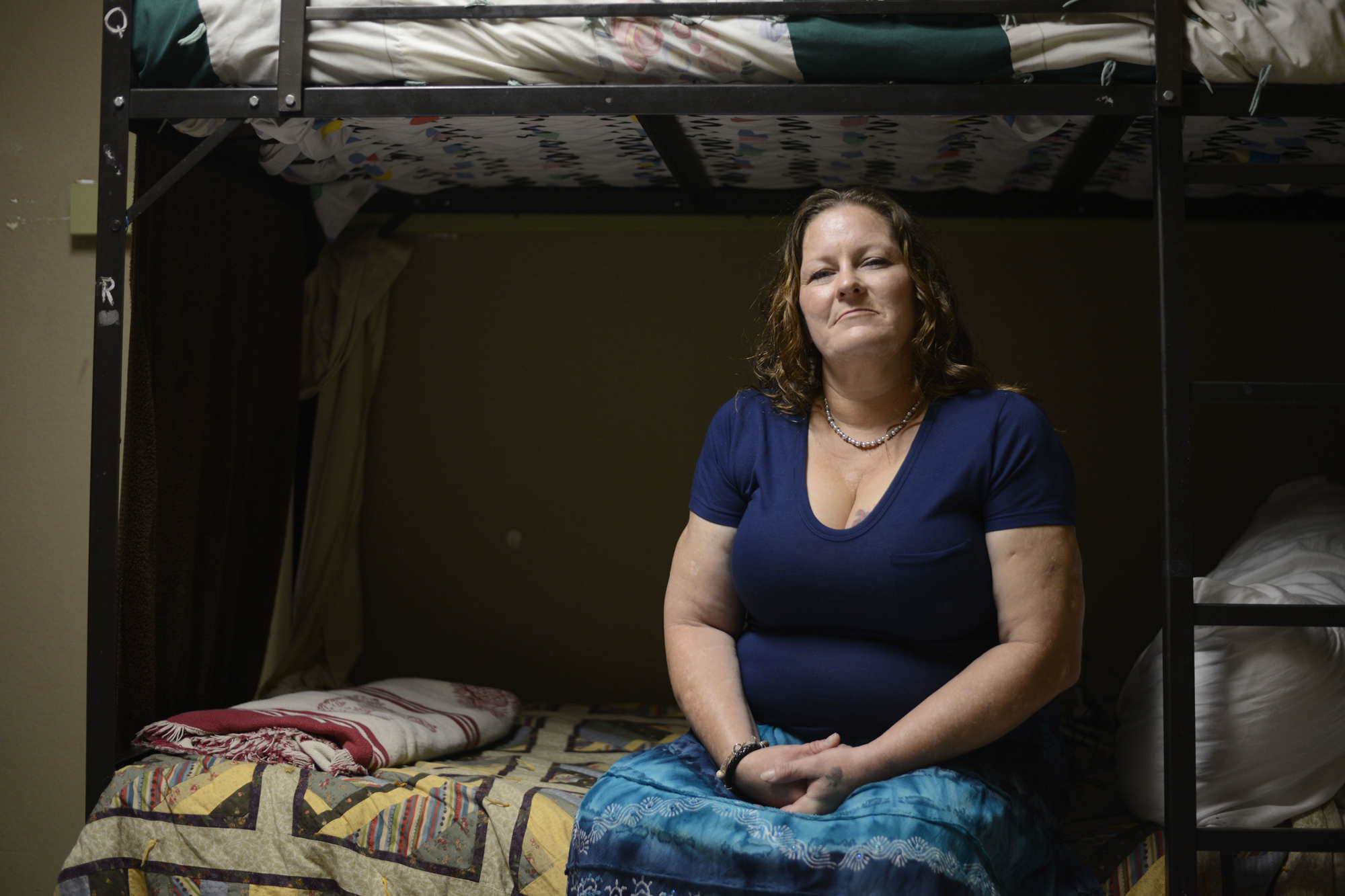One in four women in the United States will experience some form of intimate partner violence in her lifetime. For men, that number is one in nine. And 90 percent of kids affected by domestic violence will view the abuse firsthand, often by one parent against another.
These numbers are staggering. When you consider the impact of childhood trauma — which tells us that kids who experience or witness abuse are more likely to develop a slew of physical and mental illnesses as adults — those numbers are infuriating. And baffling. Domestic violence can be hard to escape, especially for those who have been in the mire of it for years, but once kids become involved, shouldn’t that be enough motivation to leave?
It’s this question, and the assumed answer, which drives “failure to protect” laws in child welfare programs across the United States. Essentially, failure to protect laws charge a parent with not doing enough to shield their child from witnessing or experiencing abuse. Virtually every state pursues some form of failure to protect charges within the civil child welfare system. These laws are aimed at the non-abusive parent living in an abusive household. Usually, the parent has been subject to intimate partner violence. But the laws can also be used in households in which the child is the victim of one parent but not the other.
Get Talk Poverty In Your Inbox
While these laws were written with the intention of penalizing a parent who neglects the safety and/or well-being of their children, they all too often make unsafe environments even less safe by penalizing non-abusive parents living in an abusive household, and can become the basis for temporarily or permanently removing children from the home. They rarely leave room to consider the complexities of intimate partner violence, instead relying on assumptions and stereotypes that are incapable of capturing the nuanced reality of family bonds.
In January of 1999, Sharwline Nicholson decided to end her relationship with the father of her infant daughter. He lived in South Carolina, and had been crossing state lines each month to visit Nicholson and their daughter in New York. But when she ended the relationship, he responded with violence.
She called 911 and made arrangements with a friend for the care of her two children while she stayed overnight at the hospital. The next day, Nicholson was notified by the New York Administration of Children’s Services (ACS) that both of her children had been temporarily removed from her care on the basis that she had failed to protect them from witnessing the violence that had been inflicted upon her by her former partner. At the time, this was considered a form of neglect.
Nicholson would eventually win back custody of her children, but would be placed on a child maltreatment registry. This action kickstarted a lawsuit that would eventually lead the New York Court of Appeals to rule in 2004 that a parent’s inability to prevent a child from witnessing abuse could not be a sole factor for removing a child. Child welfare reform activists celebrated the decision.
“What Nicholson actually did was not just to change the attitude toward victims of domestic violence,” said David Lansner, a civil rights and family law attorney who represented the plaintiffs in the Nicholson case. “Neglect had to be shown as a serious matter; you had to show that … there was imminent danger of serious harm and not just the possibility of harm. … [Child services] and the court had to balance the harm that would result from removal against the risk of leaving the child at home, so you couldn’t just ‘take the safer course’ because removal was harmful to kids and shouldn’t be done unless it was really necessary.”
Unfortunately, New York is relatively unique in that respect; other states, lacking a case like Nicholson, still remove children for the possibility of harm that caseworkers and judges interpret by a parent’s “failure to protect” her children from being in a household where abuse takes place.
Erin Miles-Cloud, who formerly worked as a parent attorney in New York and is currently one of the co-founders of the advocacy group Movement for Family Power, explained the ways in which some of the better-resourced, urban systems can still fail families, even today. “Because New York has this middle ground of family shelters, ACS sees it as an unreasonable option to stay in a home where intimate partner violence is occurring,” she said.
What many people don’t realize is that — in New York City — parents who access a shelter as the result of domestic abuse will automatically be moved to a different borough, meaning a change in school district for their children, not to mention the loss of access to support networks, such as friends and family or trusted child care, lack of which can easily become another maltreatment charge. There’s also no guarantee as to what type of housing the family will receive or for how long. In some cases this could mean dormitory-style living for a year or longer, with no access to even a personal refrigerator.
But even the most comfortable, “home-like” shelters remain government-funded institutions — which means they come with restrictive rules, such as nightly curfews and rigid limits on how many days a parent can be away from the shelter, even to visit family. They are also a source of constant surveillance for the families housed inside. Miles-Clouds calls shelters and hospitals among the “largest offenders” when it comes to calling in new maltreatment reports, and notes that New York ACS often uses shelters as “second or third eyes on a family” when arguing a related case in court.
Because child welfare agencies self-report their data, and failure to protect is not an independent maltreatment category in itself (these cases typically fall under the “neglect” umbrella), it is difficult to know exactly how many non-abusive parents end up being investigated because they were victims of abuse who sought help, or because their children reported being harmed by someone else in the household. But we do know that most states do not have even the mild protections enjoyed by families in New York. That means a child can be removed if the state convinces a judge they have been or will likely be psychologically harmed by witnessing the abuse.
Better-resourced, urban systems can still fail families, even today.
Some states will also pursue criminal charges against victims of intimate partner violence who have children in the home. In six states – Oklahoma, Missouri, Nebraska, Nevada, South Carolina and West Virginia – non-offending parents face potential life sentences for failure to protect charges, and in Texas the maximum penalty is 99 years. Last year, the Associated Press reported on the case of Tondalao Hall, a mother whose boyfriend was sentenced to two-years time served (meaning he had already completed his jail time while waiting to be sentenced) for beating her children, including a three-month-old infant. Hall, who was never accused of harming her kids, is currently serving 30 years in prison for not calling the authorities on her boyfriend.
Latagia Copeland-Tyronce, a parental rights advocate and the founder/executive director of the National African American Families First and Preservation Association who spoke to TalkPoverty about her experience, knows first-hand how devastating it can be to be accused of not protecting children from another person’s abuse. She first faced the traumatic confusion of a failure to protect charge in Toledo, Ohio, in 2013.
She was 26 years old and had been involved in an abusive relationship for 10 years. What she did not know, however, was that her daughters’ father was also sexually abusing her three eldest girls. When one of Copeland-Tyronce’s daughters finally disclosed the abuse to her sister, she promptly contacted child services.
Copeland-Tyronce immediately left her children’s father. She also cooperated with the criminal case that would ultimately land him a 30-year prison sentence. But this was not enough for Lucas County child protective services. They claimed she had known about the abuse and had failed to protect her children both from witnessing the violence perpetrated against her, and from the sexual abuse which they had experienced.
“My children never said that I knew anything or that I was involved in the abuse and I was never charged with a crime related to the case,” countered Copeland-Tyronce.
Less than a year after the initial removal, her parental rights were terminated and all six of her daughters were adopted to other families. When she gave birth to a son in 2014, by a different father and with stable housing in place, he was also removed from her custody.
“Because I had a [termination of parental rights] TPR, failure to protect, with my daughters. No other reason,” she said. At the time, the first TPR was still under appeal.
Candis Cassioppi, a mother based in Athens, Georgia, had her youngest child removed from her in the hospital after giving birth, she told TalkPoverty. The removal was prompted by an incident of assault by her child’s father perpetrated against her during her pregnancy.
Although she initially called the police and sought medical attention — causing those injuries to become part of her medical record — she ultimately declined to press charges or testify against her abuser. After her son’s birth, this incident became a reason to claim she was failing to protect her children from harm. Now, she is court-ordered to participate in a slew of activities, including domestic violence groups and parenting classes, in the hopes of regaining custody of her infant.
Like mandated reporting laws, which require certain professionals and institutions to report suspected child maltreatment, failure to protect laws and policies are in place, purportedly, to ensure that child maltreatment does not go unreported. “If a child dies in the home because there was a batterer who was so dangerous that the victim-partner couldn’t protect [the kids] … we’re still liable to make sure that the child stays safe,” explained Mary Nichols, a now-retired administrator at Los Angeles County’s Department of Children and Family Services (DCFS), to the California Health Report in 2015.
But she also admitted in the same article that the laws are confusingly vague: “If you look up California Welfare and Institutions Code 300 and just read the definitions of ‘failure to protect,’ you can see how broad they are … [If] somebody would like to craft legislation to make it more workable, in terms of protections for domestic violence [victims], that would be great. It’s a pretty raw tool that we have.”
As the cases detailed in this article demonstrate, the reality of domestic abuse is far too complex to address with vague, generalized laws. Instead of protecting families, these blanket laws mean that parents who experience domestic violence may end up burdened by a fear of reprisal for reporting that violence. Take Cassioppi’s case, for example. Her baby was born healthy; had she not called the police and sought medical attention after being assaulted during her pregnancy, she likely would have walked out of the hospital with her newborn in arms. And Copeland-Tyronce now asserts that if she were to ever encounter intimate partner violence again, she would “not at all” feel safe calling the police for help.
Lansner said implementation and caseworker attitudes are major problems with the way domestic violence cases are handled within the child welfare system. “The caseworkers just don’t get it,” he said, adding, “the caseworker might go to the home, find the guy there in violation of a protection order and then remove the children instead of calling the police and having him arrested, which is what [the caseworker] should do.”
Parents who experience intimate partner violence also face a number of other complexities that caseworkers and judges don’t always take into consideration when charging these parents as culpable for traumatizing their kids by proxy. For example, one study found that 99 percent of domestic violence survivors had also been subject to economic abuse, a form of financial control that can leave them stranded without the resources necessary to secure independent housing or provide for their children’s basic needs. Because lack of appropriate shelter, clothing, and food also fall under the child services maltreatment category of “neglect,” this leaves many non-abusive partners trapped between the crosshairs of a failure to protect and a failure to provide charge. Either way, they’re ending up on the maltreatment registry for neglect.
By necessitating that caseworkers identify concrete harm toward a child before removing her from the home, New York has found a way to slightly balance a system designed to punish parents simply for being unfortunate enough to experience abuse. Although their system is far from perfect — as Miles-Cloud noted, it funnels parents into a less-than-ideal shelter system, and the law still does not address the caseworker bias that concerned Lansner — it provides a template which other states could use to begin the process of clarifying these laws.
Ideally, however, survivors of domestic violence should be met with compassion and provided with services that help their families heal and thrive intact. It seems, instead, that as long as failure to protect charges exist, the child welfare system will continue to promote a culture of secrecy surrounding intimate partner violence, thus validating the very abuse it claims to condemn.











